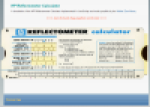Impedance Matching Course now on Udemy.com
We are excited to announce that our Impedance Matching course is now available on Udemy. Udemy is a "learning aggregation" site offering courses from many different sources. They accept payments in local currencies from around the world, making it easier to sign up for the course, especially if you already have an account with them.
- Read more about Impedance Matching Course now on Udemy.com
- Log in to post comments



